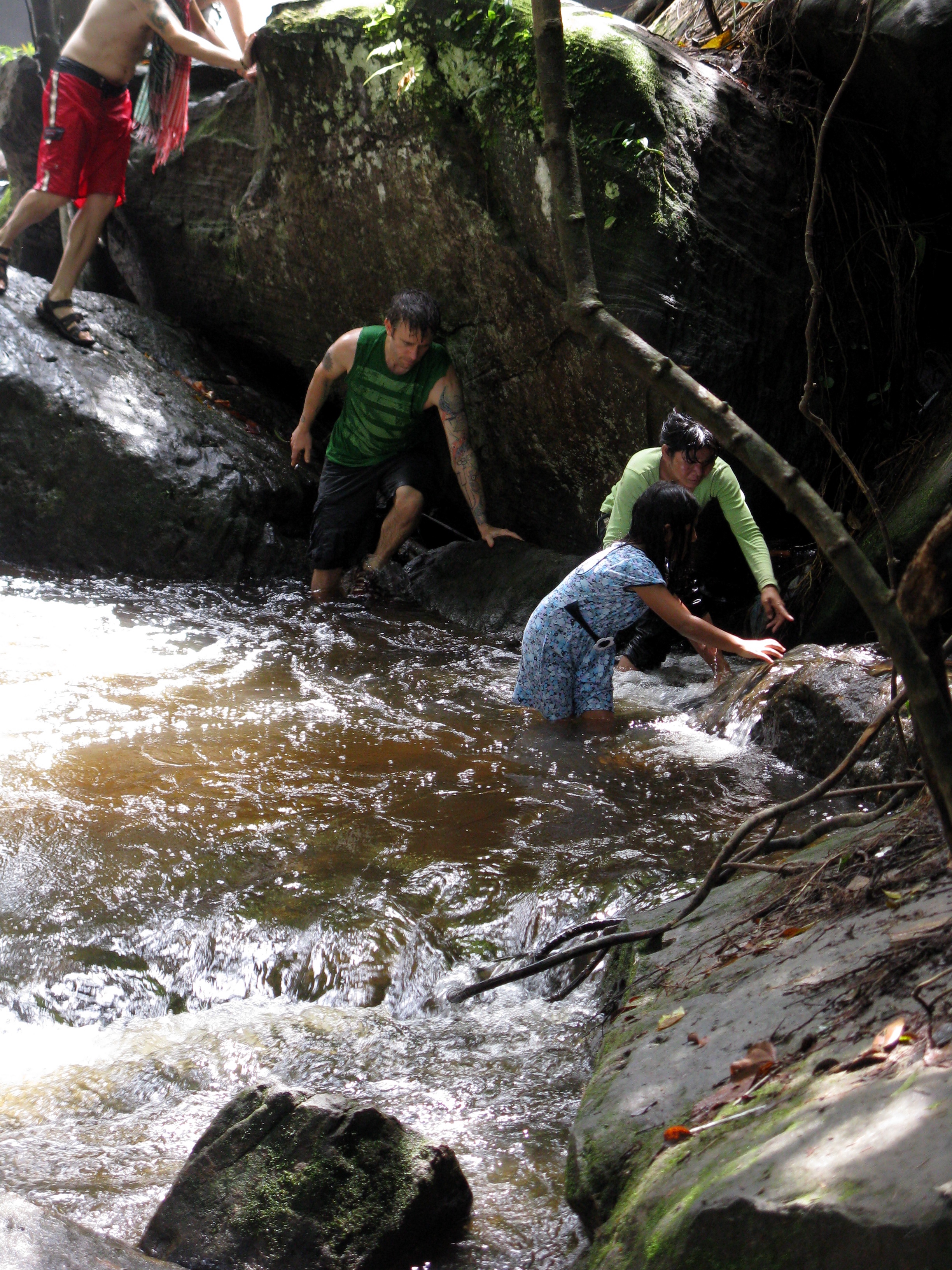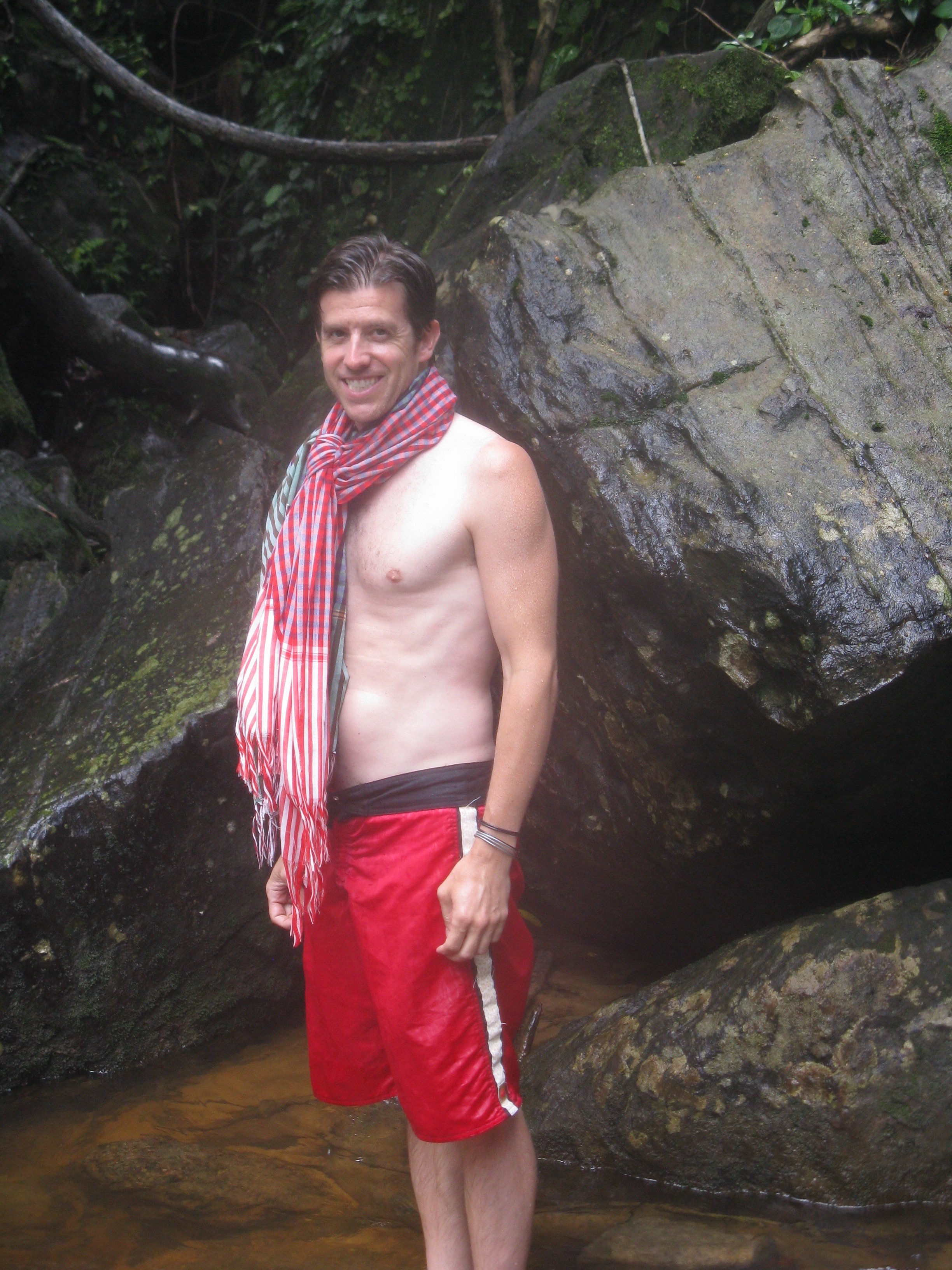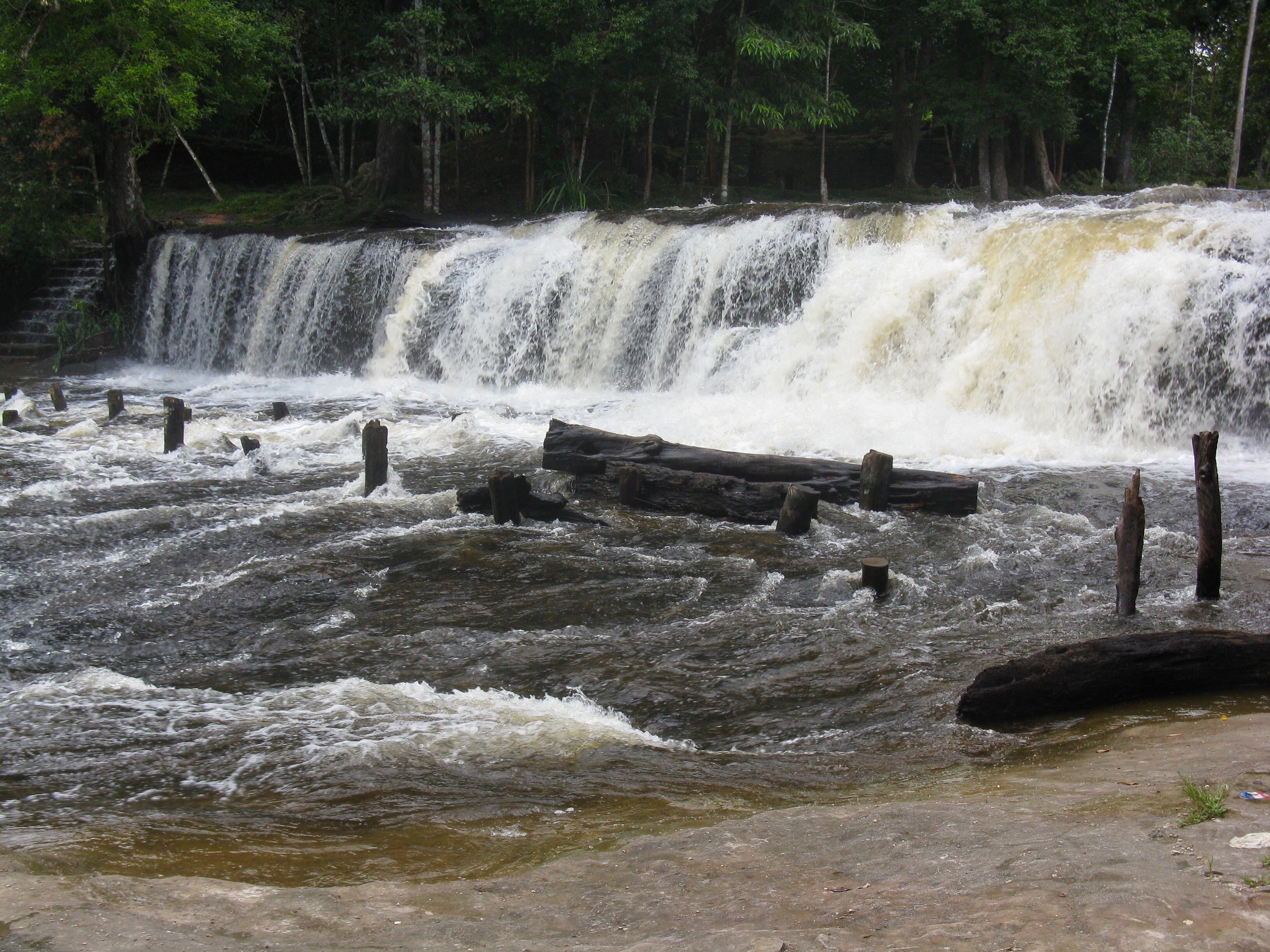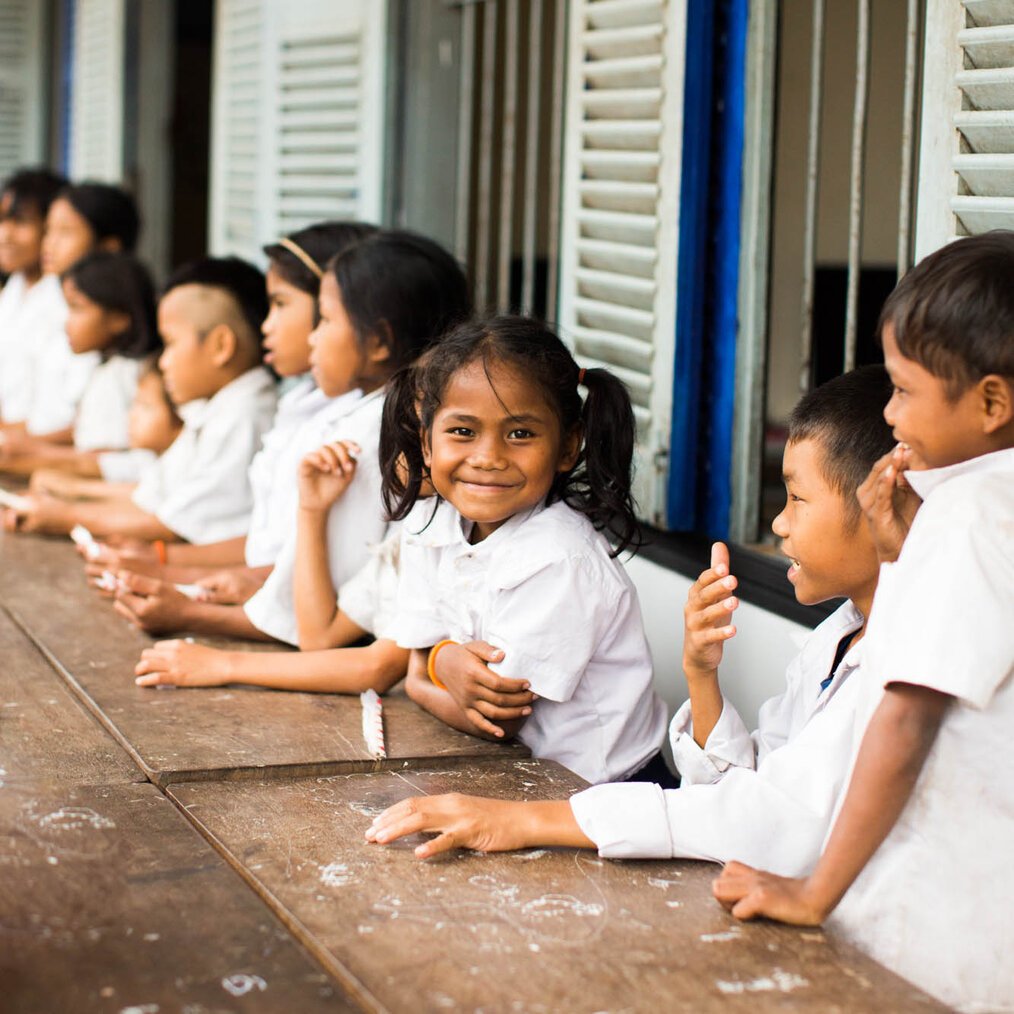Take a break from Angkor Wat and visit the reclining Buddha at Phnom Kulen and the waterfall in the “River of a Thousand Phalluses.”
After several days of exploring the ruins of Angkor Wat in Siem Reap, Cambodia, our guide Kimsan knew just the place to share with us: the sacred peak of Phnom Kulen, which translates to Mount Lychee. He took us down “dancing roads,” unpaved red dirt roads where vehicles take a beating from potholes and are rendered unusable after the rainy season. The vehicle bounces along (or dances, as the locals say), offering a bone-jarring experience to the passengers inside.
Kimsan pointed out that up until as recent as a couple of decades prior, the infrastructure did not exist to create fully paved roads. That, and the existence of unexploded landmines left by the Khmer Rouge, some of which could very well still lie buried here.
Phnom Kulen National Park, a sacred pilgrimage site for both Hindus and Buddhists, is perched on a mountain plateau, nestled amongst a dense tropical jungle. It’s approximately a two-hour drive northeast of Angkor Archaeological Park — the sandstone quarried from the foothills of Mount Kulen was used to build the temples of Angkor.
Cambodians believe the birthplace of the Angkor empire began here, when Jayavarman II founded the hilltop city of Mahendraparvata, the remains of which have disappeared beneath the surrounding vegetation.
Two young girls frolic on the bank of the Kbal Spean river
The sandstone riverbed of Kbal Spean, known as the River of a Thousand Lingas, runs through Mount Kulen. We stopped here because the site features 9th century carvings, most of them lingams (the stylized phallus symbol of the Hindu deity Shiva). These are typically placed upon a base that represents the lingham’s female counterpart, the yoni. I couldn’t help but think of the Reese's Peanut Butter Cup conundrum, “You got your peanut butter on my chocolate!” reimagining it as the naughty, “You put your lingam in my yoni!”
The mountain spring water that flows into the Spean River washes over the lingams, symbolically fertilizing them, as it tumbles downhill into the Siem Reap River, a tributary of the Mekong River, before flowing south toward Tonlé Sap lake.
A large reclining Buddha carved out of the rock fills the temple at Preah Ang Thom
Preah Ang Thom and the Reclining Buddha
Four mythical animals — the tiger, Garuda (the eagle-like Hindu deity), lion and dragon — represent the sacred qualities and attitudes that bodhisattvas develop on the path to enlightenment. These can be seen along the steps, with a snake-like naga balustrade that gently ambles uphill to the 16th century monastery of Preah Ang Thom. Beggars and children sit on the steps, looking for handouts, the mountain air heavy with the scent of incense.

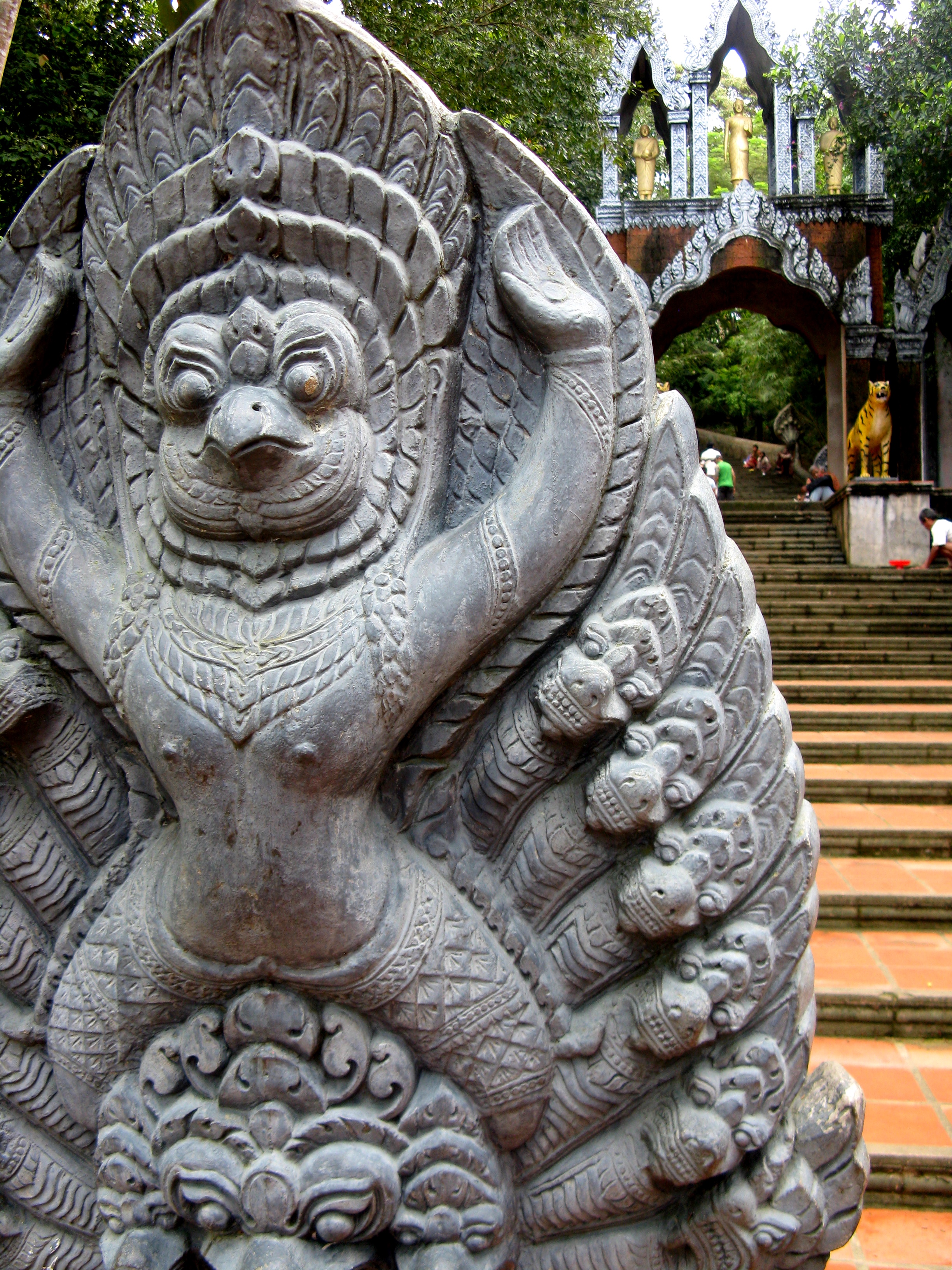

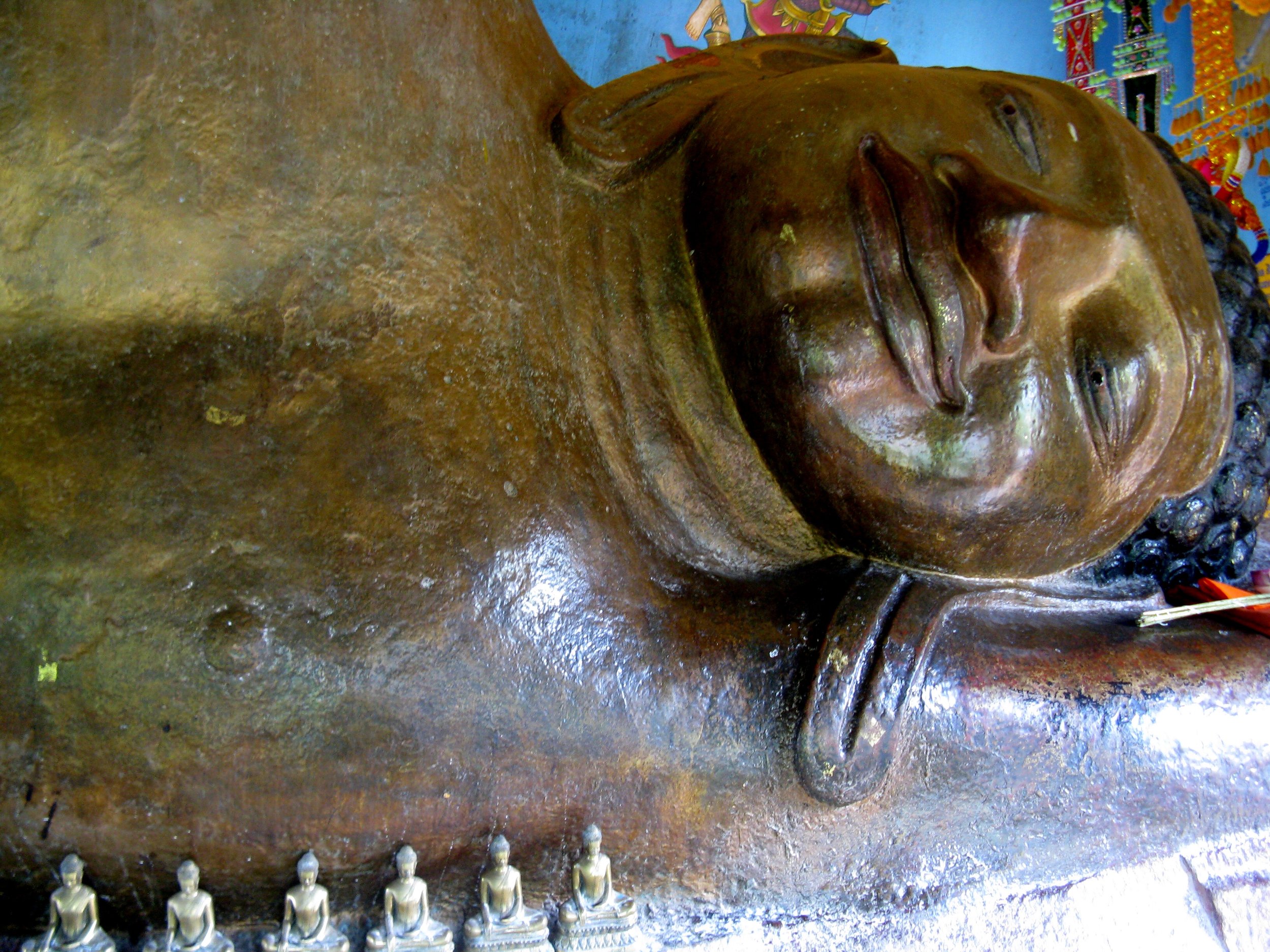


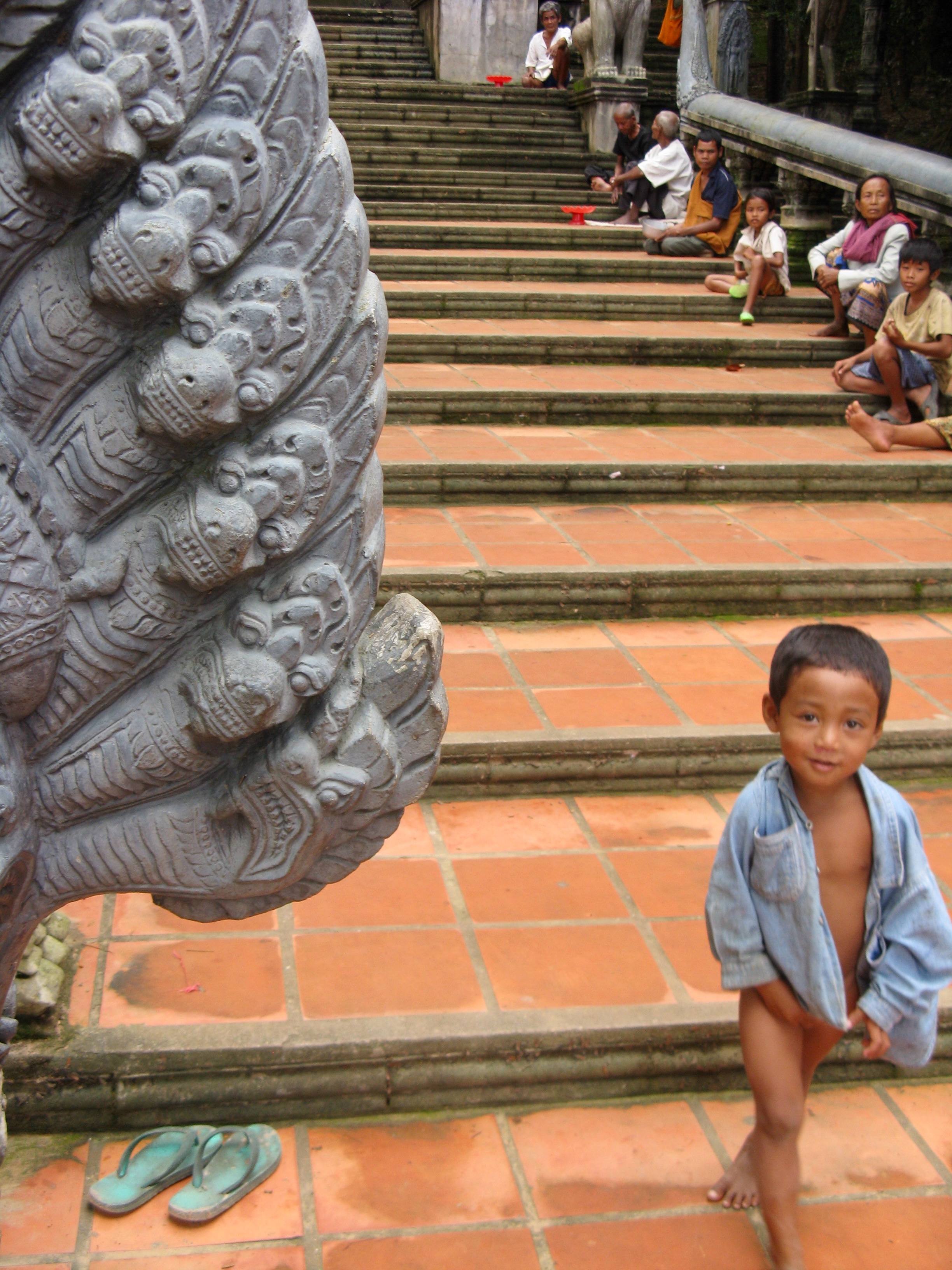

At the top is an enormous sandstone boulder and a pagoda with a massive reclining Buddha attaining nirvana carved into it. Devout locals visit the pagoda to pray and leave merit offerings in hope of attaining luck and prosperity for the year to come.
Prepare to Get Wet Chasing Waterfalls
Be sure to bring a pair of sandals and wear a bathing suit if you are planning on visiting the waterfalls of Phnom Kulen. It’s a great place to cool off in the tropical heat. There's a large swing among the trees, adorned with flowers, where you can sit, enjoy the cooling mist and observe the majestic waterfalls if you aren't interested in venturing closer to them. Wally was more adventurous and followed our friends Steve, Dre and Fatima along the slippery rocks.
Souvenir and food stalls sell offerings — including preserved goat heads!
Within the park, there are assorted souvenir and food stalls. Some of them sell offerings, including herbs, incense, horns and curiously, preserved goat heads. I’m not sure what the auspicious nature of offering a goat’s head is, but my educated guess would be that like in other cultures, they are considered a symbol of fertility.
A parasite squirmed out of this walking leaf insect after it got run over by a moped
While exploring the complex, we encountered a small gathering of locals, one of whom was trying to kill a writhing, wiry parasite with the bottom of his wooden cane that had emerged from an walking leaf insect after being run over by a moped. We were all disturbed yet fascinated.
We had an amazing experience away from the tourist crowds of Angkor for an afternoon, catching a glimpse of the real everyday life of Cambodia. –Duke



